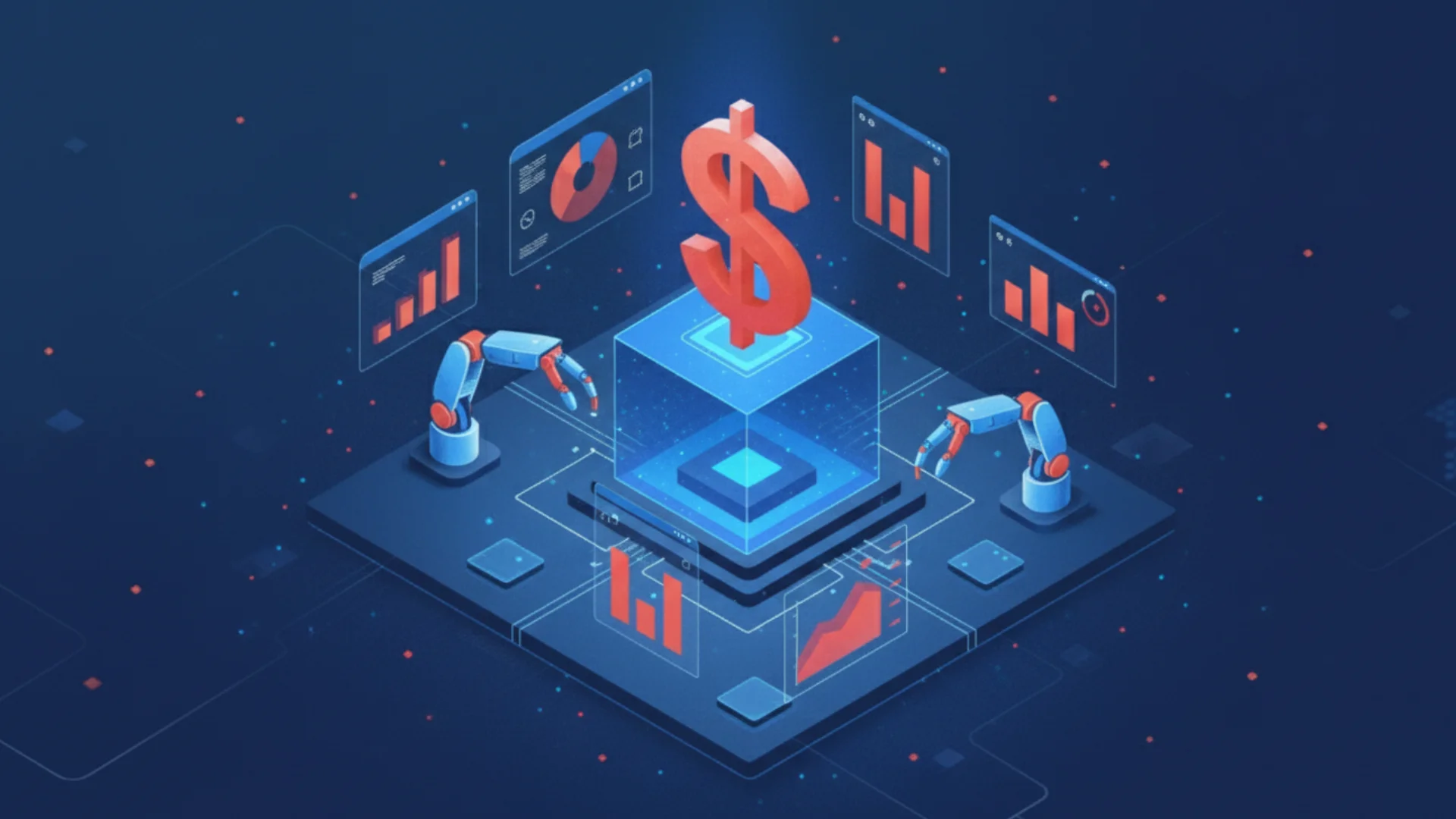The Real Problems with Building Your Own Billing System

"We know what we're doing."
Most businesses today have multiple immediate priorities that should have been addressed yesterday. In the midst of this, evaluating a billing tool rarely makes it to the priority list. With significant engineering muscle, organizations don’t think twice before taking the plunge to build an in-house billing system.

Given the fast-paced nature of work that we operate in today, most companies aim for the quickest way to send invoices to customers in a bid to expedite payments.
Drawing from our experience, businesses, especially those in the growth stage, set out to build billing solutions primarily because they just desperately need a tool in place and don’t have the budget (or the confidence) to turn to an off-the-shelf billing solution.
The rush to develop an in-house billing system
To backtrack a bit, the birth of an in-house billing tool typically occurs when an organization has only a few customers, often in the single digits, that need prompt payment. Someone from the team, in most cases a developer, is tasked with doing the bare minimum to generate a handful of invoices for customers to facilitate swift payments. This often results in hastily patched-together software, with a few days of “very reluctant developer time” dedicated to building it as quickly as possible.
The challenge with this approach for billing software is that, without the awareness of everyone involved, the choices made by this developer are going to lead to a lot more expensive and inefficient operations in the future of the organization.
For instance, building an internal billing tool often starts with simple Excel or Python scripts to automate tasks. But as the company grows, these makeshift solutions can't keep up and might even break. Imagine starting with an Excel invoicing system that works for a bit but struggles to match up as the business expands. Python scripts provide a temporary boost, which is great — you’re now being efficient and automating processes. Until things go south and you face costly billing errors.
Let’s say your solution doesn’t scale or stops working entirely. What do you do next?

At times, businesses opt for a third-party billing tool to handle tasks such as generating invoices and collecting payments. Yet, confronted with most traditional billing tools' limitations in supporting new-age billing and pricing models, teams find themselves compelled to construct an in-house solution for part of the billing infrastructure.
The desire for quick results and immediate payment collections can inadvertently lead to the creation of a system that lacks scalability and robustness, resulting in unforeseen challenges as the organization grows and handles larger volumes of transactions.
Key signs you shouldn’t build in-house
So, will developing a purpose-built billing system help?
Given the 'DIY' freedom inherent in constructing an in-house billing solution, businesses are eager to invest time and resources in crafting a tool that enhances the development of their processes and billing architecture. While this is a good starting point for addressing your immediate needs, over time it can bring frustration.
Let’s quickly run through some of the many issues that are bound to creep in:
- The purpose‑built billing system that you have developed is designed only to solve a specific problem
- It might be very time‑consuming to maintain
- Or it doesn’t keep up with the newer pricing models that your sales teams need and, in many ways, fails to match up to evolving customer needs.
Before we set out to build Zenskar, we did a fair bit of research. From billing architects to CEOs of B2B companies and seasoned finance professionals, sales, and RevOps — we spent time understanding the billing nuances, reasons for building in-house systems, industry-specific challenges, and struggles faced by the internal teams.
We came across stories of companies that invested millions of dollars in developing new products, only to hit a roadblock upon completion. The realization that integrating the newly developed product with their existing billing systems would take over six months forced these companies to halt further investment. Such circumstances lead to a significant and expensive delay in the Go-To-Market (GTM) launch. A typical delay in the GTM launch (owing to many factors, including billing) averages around four months. This could potentially result in a 54% revenue loss compared to what could have been earned without any delays.

With that in mind, let’s take a look at the many challenges that companies face when they set out to build an in-house billing system. We will break this down into the different phases and the subsequent challenges you encounter in building and managing an in-house billing system.
Cost comparison table for building vs buying a billing system
10 key challenges with in-house billing systems
Let’s now delve into the most commonly faced challenges, right from the point of getting a team in place to engineering challenges, operations, and then scalability constraints.
Phase 1: Conceptualization and planning
#1 Difficulties in building a team plus keeping up with deadlines and budgets
It's quite natural to think that building an in-house solution should be faster and easier when you have the right teams and tools in place. You soon realize that a project that originally seemed like a couple of weeks of work now has your most experienced staff spending months or even a few good years on it.
When you’re building it in-house, you do not need to spend ages researching different vendors; you just get on and build it, right? Not always. Your developers are likely engaged in ongoing tasks, requiring displacement to work on billing systems. Or worse, you may find yourself compelled to pause the development of a billing solution while awaiting developer availability.
Moreover, if you think buying a billing platform is costly, think of the real cost of a couple of months of utilizing your development team for this project. Don’t forget, the project that gets initiated for “3 months” can get stretched to 6 months (possibly a year at times). This isn't an exaggeration, given how building such a system involves numerous engineering complexities that are almost always encountered the hard way in reality. Basically, at this stage, there are many unforeseen challenges that the team setting out to build a billing system isn't even aware of. Even after that, the project is never ‘over’ — there are maintenance and updates that need to be taken care of.
Another thing to take into consideration is your opportunity cost — when your development team is building this, what are they not working on instead?

Devoting time and resources to technical debt such as upgrades, refactoring, and repairs means that your development team is allocating less effort to software improvements and innovations. This, in turn, results in a missed opportunity for potential monetary value. According to Stripe's Developer Coefficient report, developers dedicate 42% of their weekly working hours to managing technical debt (13.5 hours) and grappling with suboptimal code (3.8 hours). This equates to nearly $85 billion lost annually in opportunity costs across the globe — a substantial drain on both development time and financial investment.

If you ask us — avoid taking on complex, costly code work that’s outside your development team’s strategic focus. Know what to build, what to buy, and when to leave it to the specialists.
Phase 2: Design and deployment
#2 Engineering problems mount up
There are a lot of hard engineering problems that need to be solved, which most people don’t anticipate when they pick up the billing project. For instance — engineering bandwidth is extensively utilized in configuring currency exchange rates dynamically based on real-time market fluctuations, implementing sophisticated proration algorithms to accurately calculate charges for mid-cycle plan upgrades or downgrades, and integrating with tax calculation services to ensure adherence to diverse tax regulations across different regions. Each of them comes with a challenge of its own.
Moreover, in-house billing systems are often developed by engineers originally hired for core product work. These engineers may not be billing system experts, and the resulting lack of expertise can lead to challenges in modularizing components. This, in turn, results in incorrect architectures or tight coupling between systems that ideally should have been fully decoupled — like the decoupling of metering from pricing and billing.
#3 Onboarding and retaining engineering talent is a struggle
Software developers will remain among the top four most in-demand professions over the course of the next 10 years. As per a recent survey on the technical jobs that were the hardest to fill in 2023, engineers with DevOps skills were the most in demand.
Against this backdrop of limited tech talent, building a proficient team for billing systems is a considerable challenge, leading to under-resourced teams.

Hasty development of integrations by under-resourced teams often results in buggy software or software that isn’t modularized the way it should be. This, in turn, requires additional support in the future, along with more engineering work.
#4 Integrations with third-party tools add to the complexities
Ensuring every facet of your billing system seamlessly integrates with your tech infrastructure is a critical yet often underestimated challenge. That’s not all; managing these integrations poses additional complexities for in-house teams, including potential bugs, support issues, and increased development efforts.
Integrations built in-house are typically developed for the bare minimum requirements and, in most instances, require team members to check multiple systems to get a complete picture of a certain customer due to inadequate, infrequent, or inaccurate data syncing. At times, this includes having to manually sync data between CPQ, ERP, and billing systems.

Phase 3: Operations and Customer Support
#5 Sales teams have to make do with limited pricing flexibility
In-house billing systems often fixate on pricing based on a single or limited parameter, reducing the levers sales can pull to negotiate with their customers.
As a result, sales teams end up becoming constrained by the inability to price products the way they want due to limitations in the billing system. Introducing any new pricing approach becomes a substantial internal undertaking, involving campaigns among the sales teams, persuasion of the leadership, collaboration with the product team, and iterative work with the software engineering team — an intertwined process that spans several months.
Considering how businesses need to match the pace and adaptability of pricing changes with the speed at which they iterate on their products, the constant demand for integrating new pricing models creates an ongoing source of frustration for sales teams.
#6 Customers end up finding better options in the market
As stated above, owing to the restriction of in-house billing models, sales teams often struggle with customer negotiations and eventually end up losing deals and revenue.
The limited flexibility in accommodating various pricing models results in ineffective deal structures for customers. This pushes them away to find better alternatives that are willing to comply with their deal structure requirements.
For example, an organization might charge per API call, but a certain customer might not be willing to sign up unless the price was based on a successful API call. Getting such customizations implemented on a per-customer basis is quite challenging and expensive from an internal process point of view.
#7 Countless back-and-forths and manual hassles are involved
In many in-house billing systems, some downstream integrations may be overlooked or manually handled, triggering a cycle of back-and-forths with customer success teams, accountants, business analysts, and other stakeholders. Moreover, manual accounting processes, like exporting data to spreadsheets, introduce errors and inefficiencies.
Accountants flag issues that engineers need to resolve, introducing a complex process. This complexity stems from missing or inaccurate information in the initial data entry, potentially months prior to the time when the data was first entered into the system. This leads to issues such as missing or inaccurate information, which are often identified by accountants during auditing processes. Resolving these errors requires additional manual effort and can result in prolonged back-and-forth interactions among various stakeholders, including customer success teams, accountants, and engineers.
#8 Payment reminders get complicated
When it comes to payment collections, creating separate modules for following up with customers adds complexity and requires constant engineering support.
In-house billing systems often rely on manual processes for tasks like invoicing and email communications, leading to inefficiencies and errors. Custom emails, in particular, include manual steps outside the billing system. This involves exporting email lists, uploading them elsewhere, drafting generic emails due to a lack of formatting, and then sending them. Alternatively, for higher ticket billings, we have seen fully manual workflows where individuals copy-paste templates, tailor each email with customer-specific details, attach invoices manually, and send them one at a time.

Phase 4: Ongoing support, maintenance, and enhancements
#9 Scalability is always an issue
The initial simplicity of pricing models in homegrown billing systems makes adding new pricing plans or moving to different business models a significant engineering effort, often leading to delayed development processes. For instance, we have seen the challenges companies face when moving from simple subscriptions to a usage-based pricing model. When you start adding entitlements and provisioning into the picture, it becomes a whole lot more complicated.
#10 Transitioning to a new billing solution becomes difficult
There have been cases where organizations have taken the route of building an in-house billing tool because the models they believe work best for the company aren't supported by the billing tools available in the market.
While maintaining and upgrading features in an in-house billing tool is an uphill task — transitioning to a new billing tool may also be put on hold as too many teams and systems might have been built tightly coupled with the in-house system.
Hidden risks to highlight
- PCI-DSS Burden: Ensuring your system complies with payment card industry standards requires ongoing resources and expertise.
- Tax (VAT/GST) Management Issues: Managing evolving tax requirements manually can lead to compliance errors.
- Data Privacy (GDPR, SOC 2): In-house systems may lack the expertise or tools necessary to ensure data privacy and security compliance.
Should you upgrade to a better billing system?
There's no denying that building your own billing system can bring fast initial results. But in time, as your business and pricing models evolve — internal teams will have to struggle with adapting to diverse pricing plans, billing and accounting nuances, revenue recognition, third-party integrations, and ongoing maintenance.
With a modern SaaS billing solution such as Zenskar on the market, you should consider upgrading to a better billing system. Built from the ground up to work without engineers, Zenskar lets you automate your billing workflows and enjoy the freedom to innovate. You can configure complex contracts using our drag-and-drop builder and win deals without leaving money on the table, courtesy of limitless pricing flexibility.
By switching from an in-house setup to Zenskar, SquadStack handled its pricing complexity, automated intricate invoice generation logic, and saved 80 engineering hours every quarter.
.png)
To find out how Zenskar could help you move away from DIY billing processes and implement a scalable, robust billing system, book a demo with us.
Switch to zero-touch FinOps with Zenskar
Vertice closed books 70% faster with Zenskar
We launched our product 4 months faster by switching to Zenskar instead of building an in-house billing and RevRec system.

Frequently asked questions
It may be worth building in-house if your business has highly specific, unique billing needs that off-the-shelf solutions cannot accommodate, and you have the engineering resources to support it.
Common challenges include scalability issues, integration complexities, resource constraints, compliance management, and ongoing maintenance costs.
Zenskar simplifies billing by offering automated workflows, flexible pricing model support, seamless integrations, and built-in compliance features, saving time and reducing operational overhead.
























